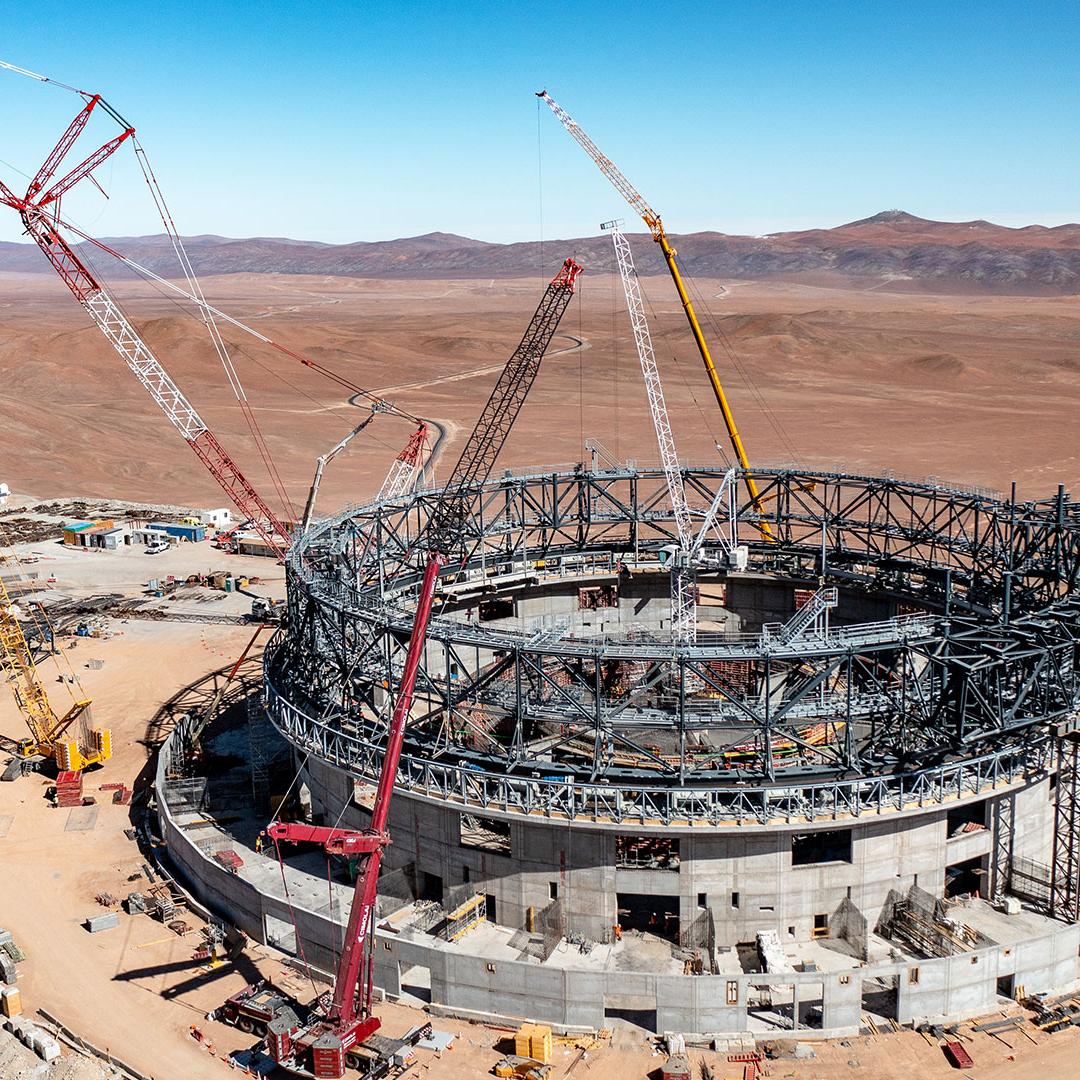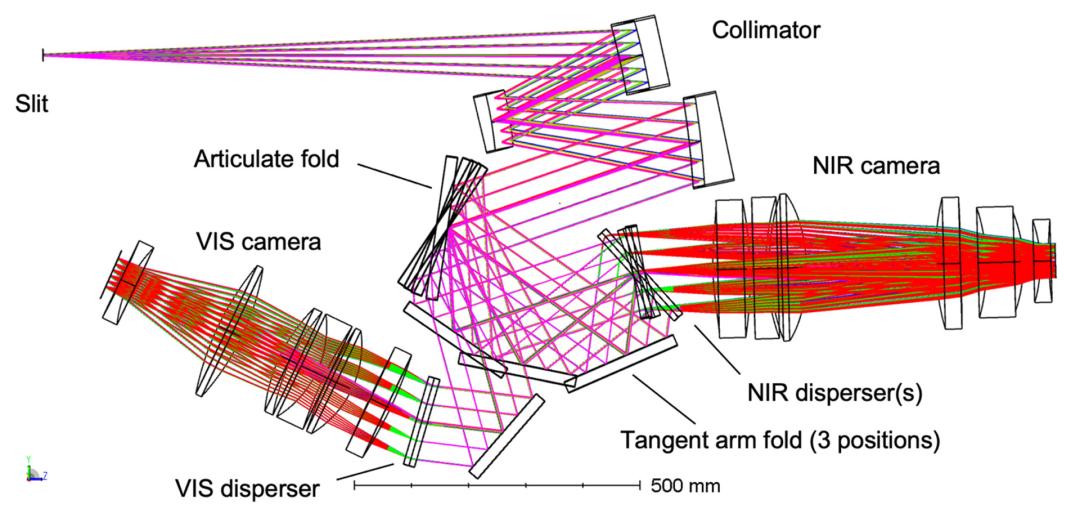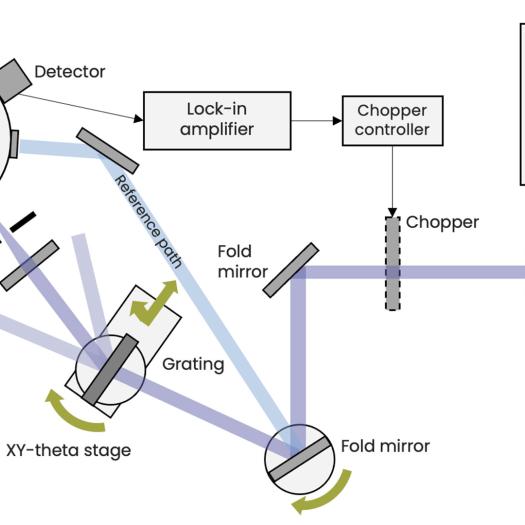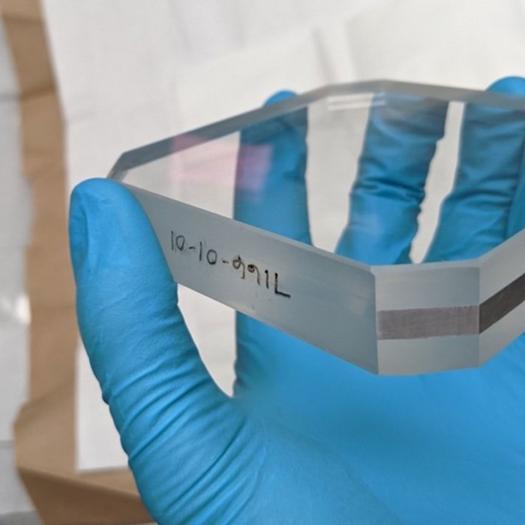When the Extremely Large Telescope in Chile is completed, it will be the world’s largest optical telescope. With a primary mirror diameter of 39 metres, it is set to gather 100 million times more light than the human eye – about 20 times more light than current existing 8m telescopes. Physicists and astrophysicists around the world are working away on the telescope’s cutting-edge infrastructure and instrumentation to get it ready for 2030; this includes a team at Oxford who are leading an international consortium to develop the ELT’s first light spectroscopic facility instrument known as HARMONI.
The HARMONI spectrograph is one of the three ‘first-light’ instruments that will be installed on the ELT; it will provide unprecedented sensitivity for distant objects and unprecedented spatial resolution for nearby objects. It will provide the telescope’s core spectroscopic capability and will exploit the ELT’s scientific niche in its early years. HARMONI will have a high complementarity and synergy with the Atacama Large Millimeter Array (ALMA) and the James Webb Space Telescope with similar angular resolution to the former and comparable sensitivity to the latter.
New astronomical instruments
As part of a broader effort to develop new astronomical instruments and technologies to meet the demands of the next generation of telescopes, astrophysicists at the University of Oxford are currently developing and characterising diffraction gratings for the HARMONI spectrograph. By splitting light into its component colours, diffraction gratings will allow astronomers to analyse the spectral lines produced by celestial objects. Professor Niranjan Thatte and his group are collaborating with an industrial partner to manufacture a special low line density volume phase holographic grating (VPHG) covering both the H and K bands specifically for use in the HARMONI spectrograph; the grating has the potential to improve our understanding of the universe. The project has been funded by the generosity of donors Philip and Roswitha Wetton.
The atmospheric H and K bands, specific parts of light’s spectrum which passes through earth’s atmosphere, cover a spectral range of approximately 1.4 to 2.5 micrometres. They are the wavelengths of choice for studying the emission lines from distant galaxies and quasars, whose emitted radiation at visible wavelengths has been red-shifted to the near-infrared spectral range. The H+K band grating is one of the most challenging gratings to develop due to its wide wavelength coverage and high transmission requirements. The grating requirements mean that a low line density is necessary to achieve a spectral resolving power of R=3000, which is needed for the HARMONI spectrograph. This resolution is ideal for resolving the complex structure of galaxies and understanding their formation and evolution.
Collaboration with industry
The high transmission requirement of the H+K band grating is another challenge. The VPH process which can be used to fabricate diffraction gratings, involves exposing a photopolymer material, dichromated gelatin (DCG), to two coherent laser beams. The interference pattern created by the two beams causes a modulation of the refractive index, which forms the diffraction grating. However, the high transmission requirement, together with the low-line density requirement of the H+K band grating means that the DCG material must be thick, making it challenging to expose with the VPH process. To overcome these challenges, the HARMONI project is developing an enhanced VPH process in collaboration with the manufacturer, Wasatch Photonics.
Measuring how the efficiency of the grating varies across its surface is a crucial step in ensuring its accuracy and reliability. This is particularly important when using different observing modes that utilise different spatial scales (akin to different zoom settings in a normal camera). Each setting offers a different field of view and a different angular resolution, which is chosen to match the requirements of the astronomical observation. When different spatial scales are used, the light beam hitting the diffraction grating varies in size and shape, which can result in varying levels of transmission if the grating is non-uniform. By mapping and measuring the performance of the grating transmission variations across its entire surface, the instrument builders can ensure that the gratings are uniform and their transmission is constant, regardless of the observing mode being used. This is a critical aspect of the ongoing project to develop a new H+K band grating for the HARMONI spectrograph on the ELT.
Advancing scientific research
The HARMONI spectrograph will be operated at cryogenic temperatures (130K or -140C) to reduce thermal noise and improve the sensitivity of the measurements. Therefore, it is crucial to ensure that the diffraction gratings can withstand these extreme conditions. The team are also carrying out cryogenic testing of the gratings to ensure that they can survive the operating temperatures of the instrument without impacting their performance.
Professor Thatte concludes: 'The ongoing project is a testament to the importance of collaboration in advancing scientific research. By bringing together experts from different fields and leveraging the resources and support of various organisations and individuals, the project is making progress towards its goals. Our work on HARMONI would not be possible without generous donations from philanthropists and astronomy enthusiasts, Philip and Roswitha Wetton.'
Philip and Roswitha conclude: 'We have been delighted to help Oxford play such an important role in the development of the HARMONI instrument.'
Additional equipment was also procured with support from the Science and Technology Facilities Council (STFC) via grant ST/X004775/1.





